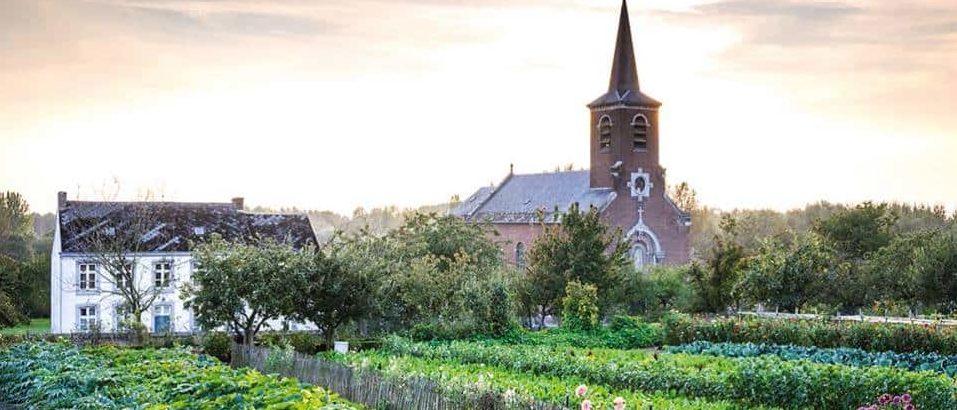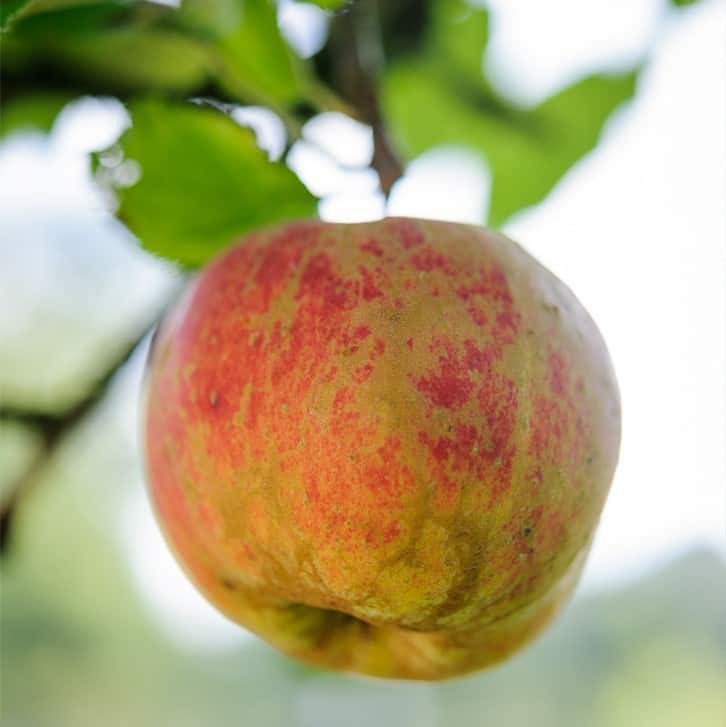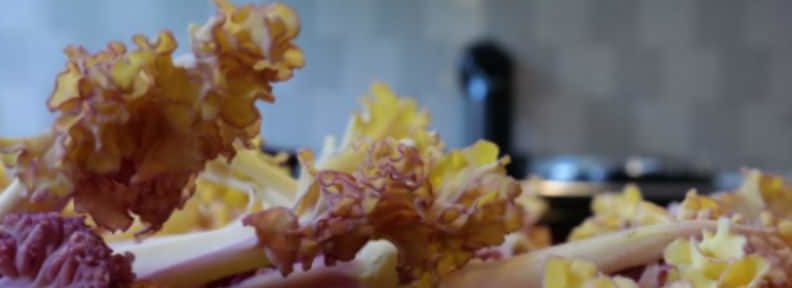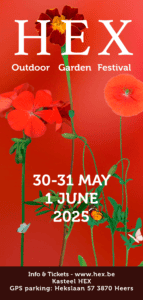The Vegetable Garden
The kitchen garden of Hex is sometimes called the most beautiful vegetable garden in the country. Here the historic framework and its excellent location play a role. The garden lies on a slightly sloping surface in the sun and is protected from the cold wind by a high wall in the northeast. Since its inception, some 250 years ago, it has always remained in culture. He possesses a special quality of sandy loam soil. The combination of fruit, vegetables and flowers makes him a feast for the eyes.

HISTORY
The original layout of the vegetable garden was cruciform to the model of 'Le potager du roi' in Versailles. The plots were divided by Buxus hedges into artistic garlands and figures. This drawing was already replaced at the beginning of the 19th century by a more rational division of the surface.
At the beginning of the 20th century the vegetable garden was adapted again - this time to the needs of the tractor. This means that the narrow intermediate paths disappeared, while the remaining paths were widened to 2 meters. Meanwhile, the orangery at the bottom of the statuary staircase was exchanged for a majestic basin surrounded by roses and in the east of the kitchen garden a place for a tennis court was created.
Yet we can say that despite these interventions, Hex's kitchen garden has retained its authenticity over the centuries and that it is one of the few examples that has been in culture for almost 250 years without interruption.

FRUITS
Castle Hex is a guardian of tradition when it comes to the cultivation of fruit and vegetables. In addition to the abundance of fruit that the surrounding orchards provide annually, the vegetable garden in particular offers a selection of historic table fruit. Towards the south wall are spaliers and nines of a hundred years old. Apples such as Cox Reinette or Courte pendu and pears like Doyonnnée or Comtesse de Paris are still among the most beloved. In the vegetable garden, a number of traditional crops are sustained with great care: sea kale, asparagus, cardoon, chicory, molsla, etc. In total, more than forty crops are cultivated every year in the vegetable garden.
SEASONAL VEGETABLES
The Hex Castle has a long history of self-sufficient living. The fine vegetables for the kitchen of the castle have been soaked on site for generations. In the large historic vegetable garden, one crop alternates with the other, so that every day of the year can be eaten fresh. Some vegetables are stored in the vegetable cellar, where they retain their freshness, taste and nutritional value.
Working with seasonal vegetables has great health benefits and the taste of daily fresh food from the garden is unbeatable.

THE CELLARS
In ancient times, every castle and every abbey had a vegetable cellar. The vaulted vegetable cellar from Hex is probably the last of its kind that has been in continuous use. In the autumn the harvest will move from the vegetable garden to the cellar for storage. Some vegetables are buried with root ball while others are stacked in sharp sand. The Kardoen is also bleached in the basement. While freezing outside, the vegetables remain fresh in the storage cellars and available to the kitchen until late spring.

HEX CULINARY
The kitchen garden of Hex offers place for a whole collection of special seasonal vegetables, each with their own method of preparation. The accompanying recipes have been refined with the generations and adapted to true home dishes. There is the Kardoen, which was bleached in the vegetable cellar in the autumn to appear on the plate as a delicacy by Christmas, accompanied by biscuits and marrow. There is the sea kale, which is bleached in the early spring under flowerpots and which, softly braised in the stove, is served with a béarnaise sauce. There is the indispensable winter Brussels Chicory, the Asparagus with mousseline, the stuffed bottoms of Artichoke, souflé of yellow Courgette or Potimarron, the home-made sauerkraut in stone jugs and so much more.
FLORAL BORDERS
'A well-stocked table deserves a beautiful bouquet.' With this idea in mind, a whole host of cut flowers found their place in the Hex gardens: perennials, bulbous plants, annuals and flowering trees and shrubs. In combination with the ever-expanding collection of shrubs, this resulted in a special chain of flower borders in English style with an abundance of flowers, within the strict framework of a French design.
GREENHOUSES AND NURSERY The detached conservatory in aluminum replaces the old greenhouse that used to stand against the southern wall of the vegetable garden. This heated conservatory is used for sowing vegetables and flowers, as well as for the large collection of fragrant Pelargoniums by countess Stéphanie d'Ursel. Behind the conservatory one enters the nursery garden through a small doorway in the wall.
The detached conservatory in aluminum replaces the old greenhouse that used to stand against the southern wall of the vegetable garden. This heated conservatory is used for sowing vegetables and flowers, as well as for the large collection of fragrant Pelargoniums by countess Stéphanie d'Ursel. Behind the conservatory one enters the nursery garden through a small doorway in the wall.
In grote platte bakken kweekt men hier de voorjaarsgroenten onder glas. Deze ommuurde tuin wordt ook de vijgenhof genoemd omwille van de serre die zich achteraan tegen de zonzijde bevindt. Die herbergt de oude vijgenbomen van mediterrane origine die nog steeds overvloedig vrucht dragen, vaak twee maal per jaar.



